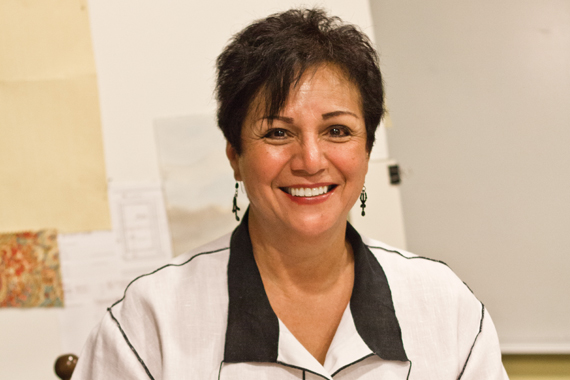
The most feared color of the rainbow: after cloaking the 70s and 80s in a mauve fog, designers such as Martha O. Morin avoid the word like the plague. Upon the suggestion that the 2014 Pantone® Color of the Year – “Radiant Orchid” – was a member of the mauve family, Martha quickly reprimanded My City, smiling, “We don’t say mauve.”
Today, access to and interest in interior design has gone viral. People seeking out ideas for home design can hop on sites such as Pinterest and Houzz for an endless supply of inspiration, and with information so readily available, very few think to consult a professional before they start ripping up carpet and slathering walls with coat after coat of avocado-colored paint. Martha, a local interior designer who utilizes Pinterest “sparingly” for fear of addiction, says that the Internet has been revolutionary in helping people visualize their dream spaces. It has also been the cause of a lot of bad design, she says. “The elements of good design never change,” Martha stated, “even though styles are always changing.” With that, Martha offered sensible and timeless advice for those with DIY-mania.
Before you can even begin to think about buying tchotchkes and throw pillows, Martha says you have to get down to basics. A room will never look pulled together and completed until the essentials are done right. “The bones of a room – the windows, molding, flooring, paint color and blinds – need to be thought through and completed before you can add all of the design elements that voice your personality,” Martha said emphatically.

Once the basics are taken care of, the planning begins. The common misconception about interior design is that it’s about decorating, adding finishes and flourishes; however, it takes a lot of research to make a space functional and beautiful. “When I approach a project, I need to first think about how my client wants to use the space,” said Martha of her process. She knows that the most beautiful furniture in the world is little more than a hindrance if it’s always in the way or never utilized. Within the pages of magazines such as Luxe and Elle Décor, interiors can be so “heavily” done that the effect is rather bizarre, misleading and frightening. “A lot of magazines highlight sleek penthouses in NYC or L.A.,” said Martha, “and most of us just don’t live that way. Average readers look at those spaces and think that interior design is expensive, classist and unattainable.” On the contrary, Martha says that good design should make life better. “For one thing, good design works. Function and scale, even in such simple things as chair heights, need to be considered to create an environment that works for you, and then aesthetics are layered to create an environment that speaks to you.”
The hottest design trends for 2014 take into account concerns for local climate and lifestyle. “Bamboo and cork flooring are very big right now,” Martha reported, saying that unlike ceramics and stone, these floors do not get so cold in the winter, making them popular for Michiganians. “True draperies are also a making a comeback for their stately look and energy efficiency,” she added. Color trends also tend to be regional, and while lavender is certainly reflecting the Pantone Color of the Year as popular choice, Martha says that blues and greens with bright splashes are brightening up homes in the area. Another refreshing trend is the reappearance of wallpaper, and after a decade or so of banishment, it’s back, providing an alternative to bland, solid walls. “Trends don’t hit the Midwest first,” said Martha with a chuckle, “and even then, they have to make it through our practicality filter.” Finally, functional design for outdoor living is becoming increasingly important for those of us cooped up indoors all winter.
Whatever you’re looking for, Martha’s advice is to make a plan and take your time: “If you rush out to buy something, you’ll regret it later,” she said, speaking from years of experience. “People eschew the cost of an interior designer, but they end up spending more when they buy the same things over and over and get frustrated because they choose pieces that don’t work in their space.”
Fabric First
In the rooms shown below, the design process began with a fabric choice. “Designing around a fabric or key piece often yields the best results,” advises Martha.
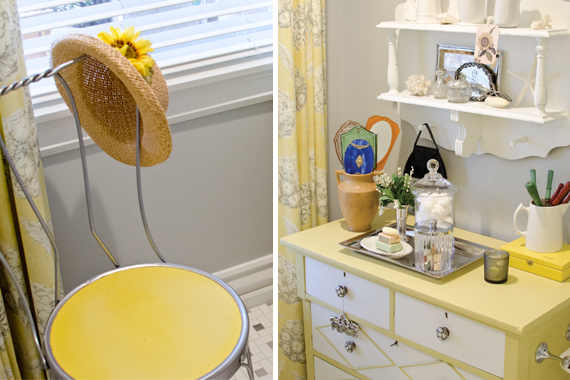
The yellow in the drapery fabric is echoed in an old chair found in the client’s garage and in a repurposed dresser, which now holds linens.
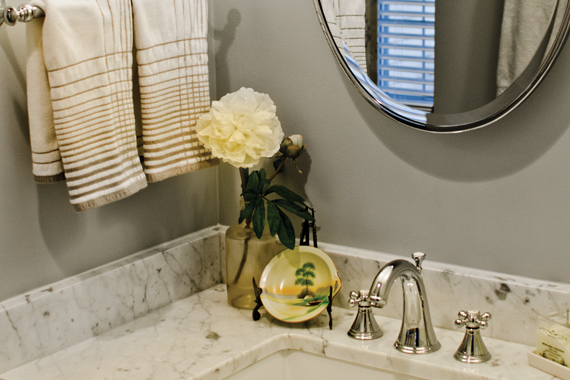
The gray walls and Italian marble vanity pick up the gray in the drapery fabric.
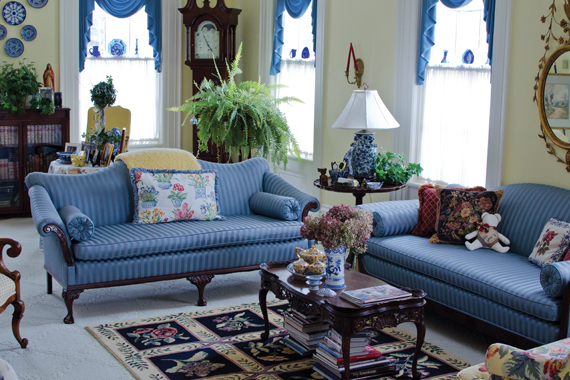
In the sitting room, the historical window treatments served as guiding inspiration for the look and feel of the room. The antique settee was reupholstered to complement the window treatments.
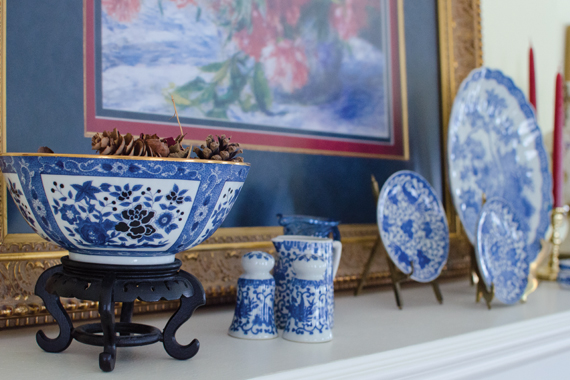
Special attention was given to incorporating the client’s beautiful collectibles into the décor. “A room is truly functional when it displays the things you love while serving a larger purpose,” said Martha.
PHOTOS BY MICHAEL GLEASON







